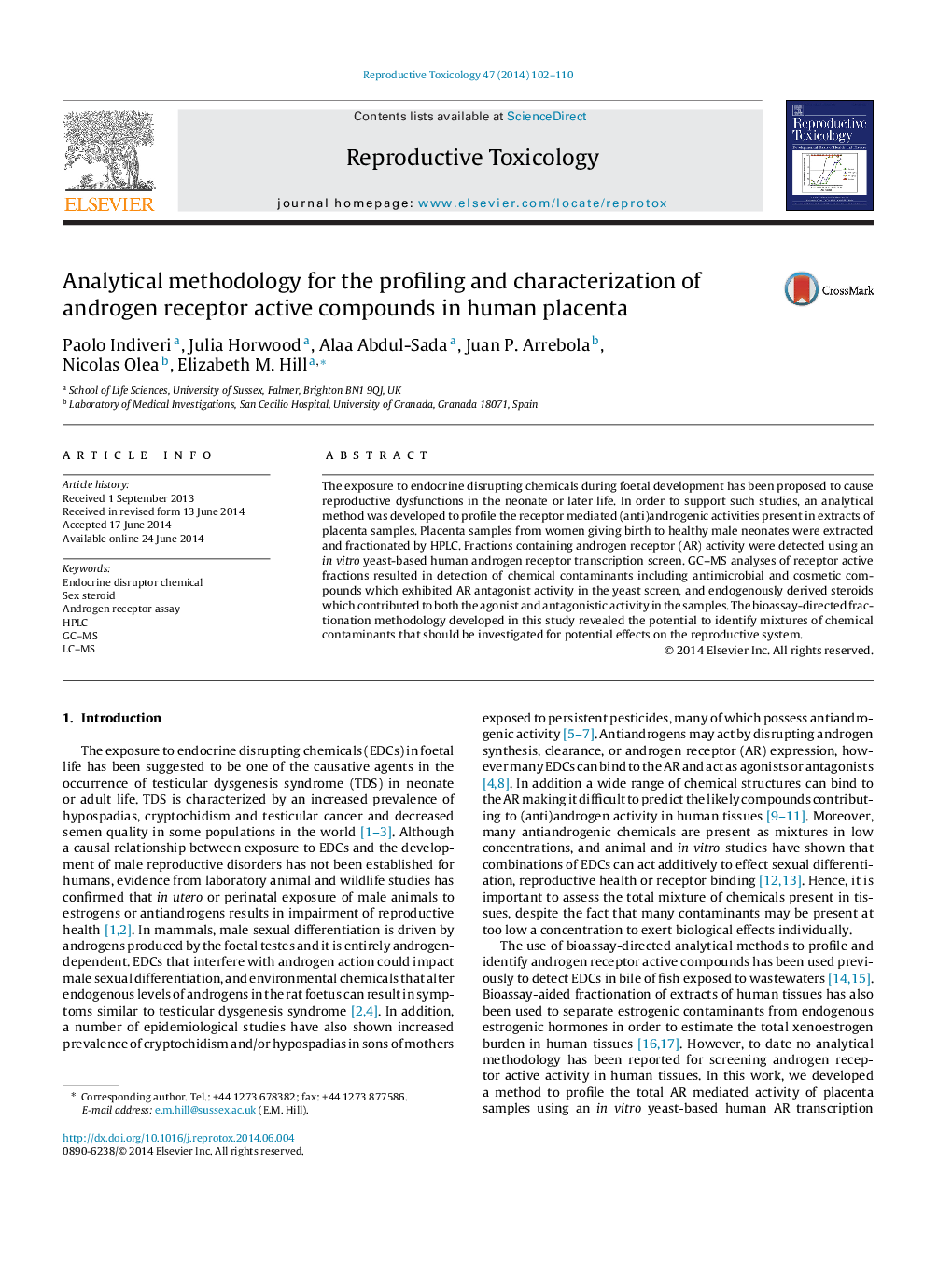| Article ID | Journal | Published Year | Pages | File Type |
|---|---|---|---|---|
| 2593529 | Reproductive Toxicology | 2014 | 9 Pages |
•A method was developed to profile the (anti)androgenic receptor activities in placenta extracts.•Placenta samples from women giving birth to healthy male neonates were fractionated by HPLC.•Fractions containing androgen receptor activity were detected using a yeast-based screen.•Detected contaminants included antimicrobials and cosmetics which were potential AR antagonists.•The methods will enable the identification of endocrine disrupting chemicals in human tissues.
The exposure to endocrine disrupting chemicals during foetal development has been proposed to cause reproductive dysfunctions in the neonate or later life. In order to support such studies, an analytical method was developed to profile the receptor mediated (anti)androgenic activities present in extracts of placenta samples. Placenta samples from women giving birth to healthy male neonates were extracted and fractionated by HPLC. Fractions containing androgen receptor (AR) activity were detected using an in vitro yeast-based human androgen receptor transcription screen. GC–MS analyses of receptor active fractions resulted in detection of chemical contaminants including antimicrobial and cosmetic compounds which exhibited AR antagonist activity in the yeast screen, and endogenously derived steroids which contributed to both the agonist and antagonistic activity in the samples. The bioassay-directed fractionation methodology developed in this study revealed the potential to identify mixtures of chemical contaminants that should be investigated for potential effects on the reproductive system.
